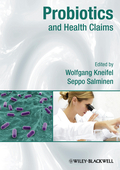
INDICE: Preface. Contributors. 1 Introduction Why the Interpretive Approach? (Niall W. G. Young). 1.1 Rheology What is in it for me? 1.1.1 Case study. References. 2 Viscosity and Oscillatory Rheology (Taghi Miri). 2.1 Introduction.2.2 Food rheology. 2.3 Directions of rheological research. 2.3.1 Phenomenological rheology or macrorheology. 2.3.2 Structural rheology or microrheology. 2.3.3 Rheometry. 2.3.4 Applied rheology. 2.4 Steady-state shear flow behaviour: viscosity. 2.4.1 Rheological models for shear flow. 2.4.2 Wall slip. 2.5 Viscoelasticity and oscillation. 2.5.1 Oscillatory testing. 2.6 Process, rheology and microstructural interactions. 2.7 Rheology of soft solids. 2.7.1 Capillary rheometer. 2.7.2 Squeeze flow rheometer. 2.8 Measuring instruments practical aspects. 2.8.1 Choosing the right measuring system. References. 3 Doppler Ultrasound-Based Rheology (Beat Birkhofer). 3.1 Introduction. 3.1.1 Overview. 3.1.2History of ultrasonic velocimetry. 3.1.3 Existing literature on UVP-based rheometry. 3.2 Ultrasound transducers. 3.3 Flow adapter. 3.3.1 Doppler angle. 3.4Acoustic properties. 3.4.1 Propagation. 3.4.2 Attenuation. 3.4.3 Sound velocity. 3.4.4 Scattering. 3.4.5 Backscattering. 3.5 Electronics, signal processingand software. 3.5.1 Electronics. 3.5.2 Signal processing and profile estimation. 3.5.3 Software. 3.6 Pipe flow and fluid models. 3.6.1 Gradient method or point-wise rheological characterisation. 3.6.2 Power law fluid model. 3.6.3 HerschelBulkley fluid model. 3.6.4 Other models. 3.7 Rheometry. 3.7.1 Averaging effects at the pipe wall. 3.7.2 Fitting. 3.7.3 Gradient method. 3.8 Examples. 3.8.1 Carbopol solution. 3.8.2 Suspension of polyamide in rapeseed oil. 3.9 Summary. References. 4 Hydrocolloid Gums Their Role and Interactions in Foods (Tim Foster and Bettina Wolf). 4.1 Introduction. 4.2 Behaviour of hydrocolloid gums in solution. 4.3 Hydrocolloid gelation and gel rheology. 4.4 Hydrocolloidhydrocolloid interactions. 4.5 Hydrocolloids in foods role and interactions. References. 5 Xanthan Gum Functionality and Application (Graham Sworn). 5.1 Introduction. 5.2 Xanthan molecular structure and its influence on functionality. 5.3 The conformational states of xanthan gum. 5.4 Food ingredients and their effects on xanthan gum functionality. 5.4.1 Salts. 5.4.2 Acids (pH). 5.4.3 Xanthan and proteins. 5.4.4 Xanthan and starch. 5.5 Food processing and its impact on xanthan gum functionality. 5.5.1 Thermal treatment. 5.5.2 Homogenisation. 5.5.3 Freezing. 5.6 Food structures. 5.6.1 Emulsions. 5.6.2 Gels. 5.7 Applications. 5.8 Future trends. Acknowledgements. References. 6 Alginates in Foods (Alan M. Smith and Taghi Miri). 6.1 Alginate source and molecular structure. 6.2 Alginate hydrogels. 6.3 Alginic acid. 6.4 Alginate solutions. 6.5 Enzymatically tailored alg
- ISBN: 978-1-4051-9491-4
- Editorial: Wiley-Blackwell
- Encuadernacion: Cartoné
- Páginas: 360
- Fecha Publicación: 07/01/2011
- Nº Volúmenes: 1
- Idioma: Inglés
